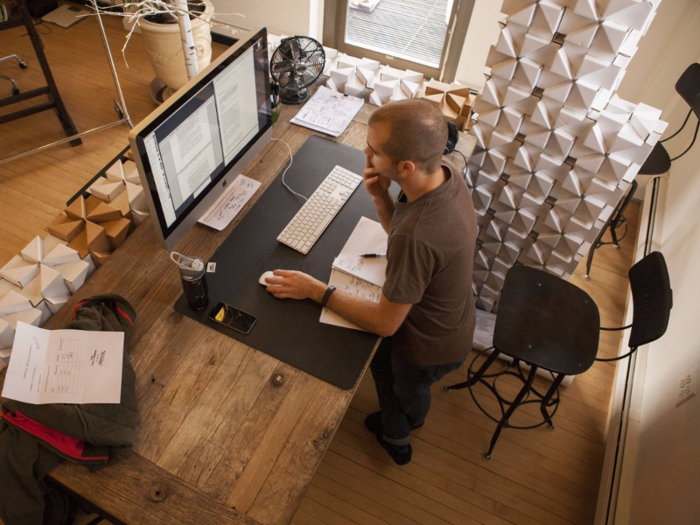Sitting too long could be harmful in ways we're still trying to understand, potentially even causing damage in the brain.
One recent study found that healthy middle-aged and older adults between the ages of 45 and 75 who spent more time sitting had thinner brain regions in areas connected to memory formation, something that can be an early sign of cognitive decline.
It's unclear whether this sort of problem could be linked to the signs of potential heart damage that seem potentially responsible for many of the harms of a sedentary lifestyle. But it there's good reason to try to counteract those harms.
Many studies have shown that exercise alone can't compensate for the harms of sitting.
If you more than double the recommended fitness guidelines, that might be enough to make up for the harms of sitting.
One review of studies published in 2016 in The Lancet found that people who got a minimum of 60 to 75 minutes of at least moderate intensity exercise per day (and who also sat for eight hours per day) weren't more likely to die than people who sat half as much.
In other words, enough exercise might do the trick, but that's quite a lot of time working out. Standard guidelines call for 30 minutes of moderate intensity exercise per day.
People who exercise a lot may sit more when not exercising, which could cause additional harm.
It's easy to feel like you've earned a reward if you just went out and ran five miles after being at your desk all day. But if then spend the rest of the day on the couch, you could still be doing a lot of harm. For that reason, the American Heart Association says it's important to remember that sitting for too long is a problem, even if you do exercise.
Standing all day isn't a perfect solution, either.
Ongoing research into the harms of sitting has many people to try switching to a standing desk (which is often followed by a transition back away from a standing desk).
Standing alone doesn't burn a lot of calories, though that isn't the only goal. It also isn't necessarily comfortable or doable all day. Many people experience limb swelling, muscle fatigue, overall discomfort, and decreased productivity.
If standing all day eliminated the harms of sitting, those pains might be worth it. But at least one study of more than 7,000 people found that all-day standers also experience elevated risk for cardiovascular disease.
The best solution is to get up every so often and move around.
The best thing you can do to counteract the harms of sitting is just to get up and move every 30 minutes or so, according to a study in the Annals of Internal Medicine. You should still try to meet exercise guidelines, but you can keep your desk job — just remember to take breaks.
In 2015, a group of researchers published a consensus statement in the British Journal of Sports Medicine, saying that people should spend two hours out of their seat each day during the workday.
Walk around, take meetings on the move, take calls while you take a stroll. Try a sit-stand desk so you can alternate between sitting and standing. And remember that taking these breaks will make you healthier and more productive in the long run.






